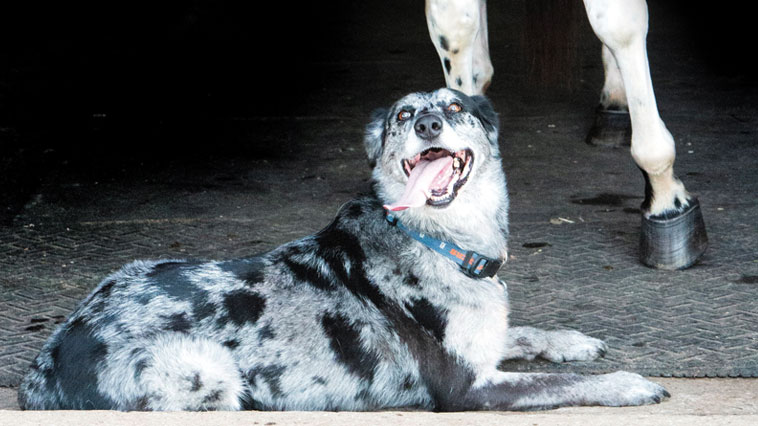


After a childhood trauma, Cheryl Erikson suffered from undiagnosed post-traumatic stress disorder until a special Paint helped her find healing and hope.
By Alana Harrison
It was a splendid evening in late November at Sunland Farm—a late-1700s homestead turned sprawling equestrian facility in Central Kentucky. The sun had begun its magnificent descent, casting a buttery glow over the farm’s 200-plus acres of bluegrass fields and miles of century-old limestone wall budding with pops of emerald-green moss. The then-31-year-old Cheryl Eriksen was aboard her bay tobiano mare, Follow Me Friend, heading back to the farm’s repurposed tobacco barn after a ride. Surrounded by fall’s glorious color and the blissful smells of fallen leaves and horseflesh, Cheryl felt a rare moment of peace and contentment.
She was riding “Farletta,” who at 4 years old had an incredibly calm temperament, on a long rein when a young horse suddenly came galloping up to the fence on their right. In a fraction of a second, four other horses wildly charged the fence to their left, just as a pack of dogs came racing out of the barn. It was a perfect storm of converging energy, and the young mare understandably could not keep her cool.
Cheryl doesn’t recall if Farletta bolted, spun or bucked that day. She only remembers the sliver of golden light reflecting off her mare’s ebony-and-chrome coat before seeing the horse’s legs above her own head and then hearing a sickening crunch as she hit the ground. She remembers the terror of not being able to breathe, her desperate gasps for air and the strange, hollow sounds escaping from her throat. Cheryl’s left shoulder blade had taken a direct hit; the force of the impact had blown a hole in her lung and left several of her ribs broken.
##
This is an excerpt from the full article—get the whole story in the Fall 2022 Chrome magazine, which is sent to all current APHA members. Not a member? Join or renew at apha.com/join.
SHARE THIS